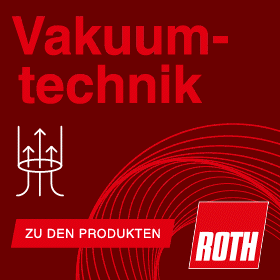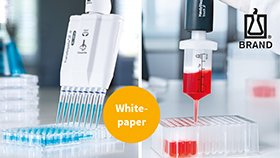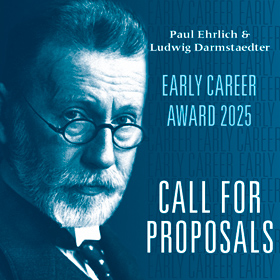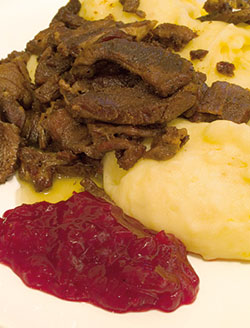Welcome to the Land of a Thousand Lakes
Tervetuloa Suomeen
Career strategies for young European scientists
by Ralf Schreck, Labtimes 01/2011
Those who plan to wind up in the far north, need a thick skin – not only because of the weather. But new programmes and initiatives have been launched to make Finland a cosier home for adventurous scientists.
Finland is well known for its stunning nature. Thousands of lakes and islands and a forest covering more than two-thirds of the country provide ample opportunities for recreational activities. Recently, Finland has received considerable media coverage for top positions in the PISA study and in a Newsweek survey that attested Finland to be the world-best country in which to live. The passion for contests such as swamp soccer, sauna endurance or mobile phone throwing shows the Finns from a different angle. Have you ever thought of doing a postdoc or setting up a research team over there? May be not! But internationalisation is now becoming a top priority in Finland. Here, Lab Times will provide you with some insights on career opportunities in Finland.
Background
With 5.4 million citizens and a land comparable in size to Germany, Finland has one of the lowest population densities in Europe. The capital, Helsinki, and the cities Espoo and Vantaa constitute the Greater Helsinki area, which accounts for more than a million people. Tampere and Turku in the southwest and Oulu in the north are additional major cities. Besides Finnish, Swedish is the second official language and is spoken by six percent of the population. The predecessor state of Finland became a Grand Principality within the Russian empire in 1809 after being Swedish for several centuries. Since independence from Russia was declared in 1917, Finland has been a parliamentary republic with a central government and parliament in Helsinki, and hundreds of municipal governments. Finland joined the EU in 1995 and is the only Nordic country in the Eurozone.
Finland’s economy was dominated for a long time by forestry and agriculture. Starting in the 1990s, electronics and the service sector became the main drivers. Nowadays, manufacturing is the key sector and encompasses wood, metals, engineering, telecommunication and electronic industries. Exports account for a third of the gross national income. Leading companies include the telecommunication company Nokia, the paper manufacturers Stora Enso or the power engine producer Wärtsilä. The global economic crisis had a major impact on Finland’s economy. According to the Helsinki Times, the next Government to be elected in March 2011 will have to generate an additional €10 billion over the ensuing four years to keep the public debt under control. But rising exports and reports by the OECD and other sources reveal that Finland has quite a good prognosis.
About two decades ago, the Finnish biotech sector was kick-started with substantial investments, most of which were high-risk and did not pay off. As a consequence, fresh capital has been scarce for a while. But nowadays, Finland has the highest relative venture capital intensity in the OECD area. More than half of the 200 Finnish biotech companies operate in the health sector, focusing on biomaterials, diagnostics, medical devices or drug discovery and manufacturing. Several publicly-funded programmes are targeting the biotech sector, such as “SymBio – Industrial Biotechnology”, “Pharma – Building Competitive Edge” or “BioRefine”. Companies with late clinical product development include Ark Therapeutics, Hormos Medical or FIT Biotech. Additional showcases are, for example, Turku-based MetGen, focusing on novel biocatalysts, Biosilta, providing technologies for microbial cultivation and protein production or Bioretec, developing advanced bio-adsorbable implants. The largest pharmaceutical company with a focus on research and development is Orion Pharma, headquartered in Espoo.
Performance
How is Finland doing in comparison to other countries? In several rankings it has been losing some ground over the last years. For example, it slipped ten places in the last IMD World Competitiveness ranking and four slots in the Human Development Index. However, in the Global Competitiveness Report 2010, it is well positioned as seventh among 139 countries. In all rankings, high scores were received for the high quality of the Finnish educational system, whereas tax and labour regulations led to devaluation.
With respect to its scientific output, Finland is doing quite well. According to the SCImago Journal and Country Rank covering the years 1996 to 2008, Finland is 25th in the overall number of publications, 20th in citations and 18th for citations per document. Thomson Reuters’ ScienceWatch uncovered that Finland’s relative impact is particularly high in environment/ecology, physics, agricultural sciences, clinical medicine and geosciences. With almost 1,600 articles per million citizens, Finland ranks third among the OECD countries. In the latest university rankings, including the Academic Ranking of World Universities (ARWU) and the QS World University Rankings, the University of Helsinki was the only Finnish university to make the top one hundred. So far, only four Finns have received a Nobel Prize, including the chemist Artturi Virtanen, whose work related to agricultural and nutrition chemistry was honoured in 1945, and the Finnish/Swedish neurophysiologist Ragnar Granit in 1967.
Research and innovation system
Finland is one of the leading nations worldwide with respect to relative spending on Research & Development (R&D). The total expenditure amounted to €6.8 billion in 2009, which corresponds to 3.9% of its gross domestic product. Close to 70% of those expenses were on the business sector, with Nokia contributing more than half. The public research and innovation system is primarily directed at the national level. At the top is the Finnish Government, which is supported by the Research and Innovation Council, an advisory board responsible for overall strategy and coordination. Several ministries are in charge of their own budgets for research and innovation at the level below. The Ministry of Education and Culture (OKM) and the Ministry of Employment and the Economy oversee more than 80% of all public R&D funds. A couple of public funding agencies form the third level, including the Finnish Agency for Technology and Innovation (Tekes) and the Academy of Finland, which both are introduced in more detail below. Finally, there are the research performers, including 16 universities and 18 public research institutes. The largest institutes are the VTT Technical Research Centre of Finland, the Finnish Forest Research Institute Metla, the MTT Agrifood Research Finland and the National Institute for Health and Welfare. Notable is that VTT, with 3,000 employees and a €280 million budget, is the largest applied research organisation in Northern Europe.
Last year, the Academy of Finland published the report “Research Policy: Tools and Practices: A Five-Country Comparison”. Finnish research and science policy measures of the last decade were compared to the Netherlands, Ireland, Denmark, Switzerland and Norway. It turned out that the comparator countries, in contrast to Finland, have been particularly successful in their research efforts. It was documented that they have been continuously working on their measures and policies, whereas Finland has been relying on its science policy from the start of the decade. Major drawbacks of the Finnish system were pointed out: poor internationalisation, a misbalance between thematically targeted and researcher-driven funding, an inadequate national infrastructure and low salaries unattractive to recruit top scientists from abroad.
That the Finnish Innovation System is in urgent need of radical reforms was also revealed in an earlier evaluation on behalf of the Ministry of Employment. Despite its relative effectiveness and high performance, it became evident that Finland has been losing ground. Major points raised: too many organisations with partially overlapping functions, e.g. in the areas of internationalisation or start-up and entrepreneurship support, a lack of coordination between ministries, funding bodies and regional and national policies, missing tax incentives, too many governmental research institutes, lack of risk-taking and explorative funding programmes on trial basis and insufficient mobility of scientists.
Tekes
Tekes, the Finnish Funding Agency for Technology and Innovation, supports companies but also universities and public research institutes. Tekes is an agency under the Ministry of Employment and the Economy. Major objectives are to raise the competitiveness of the Finnish industry and service sector, to intensify cooperation between the private and public sector and to promote internationalisation. Funding activities range from problem-driven basic research to pre-competitive and applied industrial research. Around 2,200 projects received funding in 2009. Research and innovation received about €580 million, out of which 40% were utilised for projects related to environment, climate and energy.
Universities compete for grants in the frame of thematic programmes or larger networks or benefit from subcontracting. A major initiative in Tekes was launched with the Strategic Centres for Science, Technology and Innovation (SHOK). Six Centres are currently in operation and are each funded with around €50 million a year for up to ten years. For example, the Health and Well-being Cluster SalWe Ltd comprises 16 companies and 12 research organisations. It focuses on products, services and practices to prevent and treat diseases having a major public health and economic impact, including obesity and cancer.
Individual researchers from abroad may take advantage of the Finland Distinguished Professor Programme (FiDiPro). FiDiPro (www.fidipro.fi) is jointly administered and funded by Tekes and the Academy of Finland. Grants are provided to establish long term cooperations with outstanding scientists from abroad and cover the salary of the lead scientist and team members, travel and research costs as well as a family allowance. Funds are awarded for a period of between two and five years and grantees have to spend at least four months a year in Finland. There is no need to abandon your position at home. The programme comes in two flavours: FiDiPro Fellows and FiDiPro Professors. Fellows usually have three to four years postdoctoral experience, whereas Tekes and the Academy both finance Professors and only Tekes finances Fellows. Applications are made by the host institution and not by the scientist. According to Anne Palkamo from Tekes, ten new projects are currently funded by Tekes each year with a success rate of about 40%. Next application deadlines are on Feb 28 for applications funded by Tekes and in October for those funded by the Academy. Beyond that, many Tekes programmes have integrated measures to promote in- and outbound mobility.
Academy of Finland
The Academy of Finland is the major funding agency for basic research and operates under the Ministry of Education and Culture (OKM). Science policy advice and evaluation, researcher education, internationalisation and the promotion of public and private collaborations are other activities. Funding decisions accounting for €340 million were made last year. Main funding measures are Academy research projects, thematic research programmes and the Centres of Excellence. In addition, individual researchers benefit from three personal grants: Postdoctoral Researchers, Academy Research Fellows and Professors, and as already mentioned FiDiPro Professors. The Academy is also in charge of 112 graduate schools with 1,600 PhD students funded by OKM.
The Academy has four research councils: Biosciences and Environment, Health, Natural Sciences and Engineering, and Culture and Society. An eight-member board is in charge of policy and allocation of funds to the research councils. Moreover, it selects Academy Professors and Fellows or makes final decisions on research teams for the Centres of Excellence. Board and council members are primarily professors employed at Finnish universities. More than half of all applications to the Academy are peer-reviewed with an overall success rate close to 20%.
If you are looking for exciting research groups, it is worth taking a closer look at the Centres of Excellence (CoE). CoE comprise single or collaborating research teams carrying out research at international level. They went through a rigorous peer-review, are headed by an influential scientist and are well-funded with adequate infrastructure. Internationalisation, researcher training as well as collaborative research are additional cornerstones. Right now, 41 CoE are in operation and the evaluation for Centres to start in 2012 is ongoing. Funding by the Academy is limited to €2 million for a three-year period per CoE but additional funding partners, including the host, foundations or companies may contribute additional funds.
Fruitful work
The Academy also has a special postdoc programme. A total of 146 postdocs across all disciplines received grants in 2009. You may apply, if your doctorate is not older than four years. The three-year funding period may include research stays abroad and provide about €65,000 annually. Outstanding applicants may set up a small independent research team and receive up to €150,000 per year. In general, the Academy contributes up to 80% of the applicant’s salary, research and mobility costs. Postdocs, who successfully applied in the last October 2010 call, will be funded between September 2011 and August 2014.
Much sought-after personal grants are those of an Academy Research Fellow or an Academy Professor. Last year, there were 280 Academy Fellows and 41 Professors in total. The aim of the Academy posts is to give outstanding scientists the opportunity to do independent research with marginal supervision and teaching assignments. The Academy post provides the salary of professors and fellows: €8,030 and €4,460 per month plus overheads, respectively. In addition, the application for an Academy grant covering the salaries of additional team members, running expenses and mobility measures is possible. Funding is granted for five years, which is renewable in cases producing particularly fruitful work. The enforcement of the new Act on the Academy of Finland in 2010 led to the Academy post system being suspended. Though the Academy will further select and provide funds for Fellows and Professors, they will no longer be employed by the Academy as public servants but by the host institution.
Additional targeted funding opportunities for individual researchers are available for postdocs in aging research (FLARE 2), for clinicians doing research and in the frame of bilateral cooperation agreements. The particulars of these agreements differ from country to country, so you have to look up what is covered in the agreement with your home country. Besides a strong cooperation with other Nordic countries, priority countries are China, India, Russia, Japan, Brazil, USA and Canada.
Higher education
The Finnish higher education system has two major branches: universities and polytechnics. Universities gained substantial autonomy under the New Universities Act of 2010. Today, they operate legally independent but still receive state-guaranteed core funding. The Act is considered to be a radical reform for Finnish universities. Polytechnics, also called universities of applied sciences, were established in the nineties and provide profession-oriented education in response to labour market needs. Research is done, if at all, in the context of advancing products and ideas to the market. In contrast to the universities, they do not confer the Licentiate, which is an intermediary postgraduate degree, and doctoral degrees. In the Vision 2020 strategy the Ministry for Education proposed to reduce the number of institutions to 15 universities and 18 polytechnics.
According to Statistics Finland, close to 140,000 students attend polytechnics, whereas 170,000 students are enrolled in universities. Classes are generally held in Finnish or Swedish but 350 degree programmes are taught in English. The percentage of international students is quite low at 4% but is rising. In graduate schools their percentage is 16%. The recent introduction of tuition fees in selected English-taught Master programmes for students from outside the EU/European Economic Area was fierily discussed. The 2009 Strategy for the Internationalisation of Higher Education Institutions by the Ministry of Education provides over 30 measures, which should not only lead to the doubling of international student numbers by 2015 but also make Finland more attractive for scientists from abroad.
The Centre for International Mobility CIMO will also benefit from the new international strategy. CIMO operates on behalf of the Ministry of Education and Culture and is in charge of various scholarship and exchange programmes, including those with EU funding. It operates the “Study in Finland” web site, which is a rich source of information for international students. For doctoral students two fellowships are of particular interest. The Finnish Government Scholarship Pool offers scholarships between three to nine months for doctoral studies, research or teaching at higher education institutions in Finland. To apply, a master degree and a citizenship in one out of more than thirty countries having an agreement with Finland are required. Postdocs may not apply. A monthly allowance of €1,200 is provided. Applications have to be made in your home country, where the institution in charge pre-selects up to ten applications, which are submitted to CIMO. Annual calls are usually published in September. In addition, CIMO fellowships are available for a three to twelve-month stay for researchers with a Master degree from all countries. Again, postdocs may not apply. The monthly allowance is between €800 and €1,200 and there is a prerequisite for an established contact with a Finnish host institution. There are no deadlines but it is recommended to apply three months before your trip. Applications have to be made by the department at the host university.
Tenure track
A four-tier research career system is currently being promoted by the Academy of Finland and the Ministry of Education: four-year appointments for postgraduates and doctoral students, three to five-year appointments for postdoctoral researchers, fixed-term or permanent posts at the group leader and Academy Fellow level, and mostly permanent appointments for professors, Academy Professors and research directors. Tenure track was introduced last year by the Aalto University and the University of Helsinki, and more universities are expected to follow. Whereas tenure track is the main career system towards a professorship at Aalto University, the University of Helsinki initially launched only ten such positions on a trial basis. At the University of Helsinki the tenure track system is open for scientists of all nationalities with a doctorate of between three and seven years. They will receive up to two fixed-term contracts before being evaluated for a tenured professorship.
The University of Helsinki is Finland’s oldest and largest university. Originally founded in Turku in 1640, it was relocated to Helsinki in 1829. Nowadays, there are about 35,000 students enrolled. On average about 20% of student applicants are accepted. Five hundred professors work in eleven faculties, which are spread over four main campuses. In addition, several independent research institutes have been launched, including the Institute of Biotechnology, the Neuroscience Center and the Institute for Molecular Medicine Finland. The University of Helsinki contributes to 26 National and seven Nordic Centres of Excellence and has about 30 graduate schools. Finland’s youngest university is the Aalto University, which was established as a foundation in early 2010 by the merger of three established institutions: the Helsinki University of Technology, the Helsinki School of Economics and the University of Art and Design Helsinki. As a governmental flagship project it is about to receive a one-time cash injection of half-a-billion euros with the goal of becoming a “Finnish Harvard”.
Foundations
Roughly 1,000 grant-making foundations in Finland spend more than €300 million a year, primarily on arts and culture but also on science. The Swedish Cultural Foundation in Finland, the Finnish Cultural Foundation and the Sigrid Jusélius Foundation make funds available in the order of tens of millions. Also worth mentioning here are the Jenny and Antti Wihuri Foundation, the Emil Aaltonen Foundation and the Alfred Kordelin Foundation. Several medical foundations provide fellowships and grants and have individual annual budgets of up to €4 million: the Cancer Society of Finland, the Paediatric Research Foundation, the Finnish Foundation for Cardiovascular Research and the Finnish Medical Foundation. Several regulations and laws concerning foundations have been changed lately. For example, donations made by individuals are for the first time tax-deductible in Finland. In addition, to stir a culture of giving to universities, the government is adding a 250% premium to all private donations. A new law also brought improvements for scientists employed by foundations, who are now eligible for pension and social security benefits as regular employees. Corporate foundations in Finland have only limited impact.
The Council of Finnish Foundations is an association representing more than 120 foundations, but does not award any grants and fellowships by itself. According to the foundation’s coordinator Kai Kilpinen, they take care of the major Finnish foundations providing close to 95% of all private grants in Finland. The Council of Finnish Foundations runs a database, where you may search for possibilities to fund your research. Unfortunately, the content is currently primarily in Finnish or Swedish. So you have to use one of the free online translators or ask a Finnish or Swedish lab mate for assistance.
The Finnish Cultural Foundation, with almost €1 billion assets, is one of Europe’s top 50 foundations. It promotes all sorts of activities related to arts and sciences. The majority of funds are distributed via grants to individuals, groups or organisations. Last year, the Central Fund provided more than 1,100 grants totalling €20 million, whereas 17 regional funds distributed 1,300 grants worth €9.3 million. About a quarter of grants are earmarked for activities related to technologies, agriculture and forestry, medicine and natural sciences. Science grants are awarded for postgraduate scientific work and doctoral studies. A twelve-month grant amounts to €21,000, which is upgraded to €25,000 in case of scientific work by doctorate holders. Fifty-eight postdoc grants were awarded last year. They are limited to one year but you may also apply for one of the highly competitive three-year grants. The Cultural Foundation also teamed up with seven other Finnish foundations to establish the Foundations’ Post Doc Pool (www.postdocpooli.fi), which is running between 2010 and 2012 as a trial and provides up to 60 grants a year for outgoing scientists with a doctorate.
With an annual funding volume of €15 million, the Jusélius Foundation is the largest private supporter of biomedical research in Finland. Large scale and domestic grants support research activities based in Finland, whereas fellowships enable Finnish postdocs and senior scientists to work up to 24 months abroad. As a scientist from abroad, you may apply for a foreign grant. Travel and living expenses are covered but no other research-related costs. Senior scientists may stay for up to one year, whereas postdocs are initially supported for one year with the possibility of extension. Applications have to be made by a Finnish scientist active in your area of research. Closing dates for applications are mid April and mid October.
There are several additional foundations that may help you be funded. For example, each year, the Orion-Farmos Research Foundation provides more than half-a-million euros for research projects in medicine, veterinary medicine, pharmacy and related sciences. Seventy-four scholarships were granted in 2010. Doctoral students receive up to €5,000 and postdocs up to €25,000. Some universities have also set up their own foundations to support research activities. For example, last year the Research Foundation of the University of Helsinki awarded 40 one-year fellowships, each worth €21,000 to doctoral students and also oversees a larger number of additional funds, whose purpose has been specified by individual donors. So it may be worth taking a look into local funding possibilities offered by the university of your choice.
Outlook
Finland has recognised that its current research and innovation system is in urgent need of reform in order to remain on par with countries making comparable efforts. In face of a conspicuous public debt, funding of research activities in relative terms remains currently high. Focused initiatives, such as the new Aalto University, Biocenter Finland or FIMM and the National Network of Molecular Medicine, try to make the best out of the available funds and gain international visibility. The new Universities Act from 2010 and the Strategy for the Internationalisation of Higher Education Institutions address major points raised during national and international evaluations. But it will take a few more years before these efforts are implemented to, hopefully, make Finland more attractive to scientists from abroad. In the meantime, stay with the established excellence programmes, if you are currently considering doing research in Finland.
Internet Resources
Last Changed: 09.06.2012










